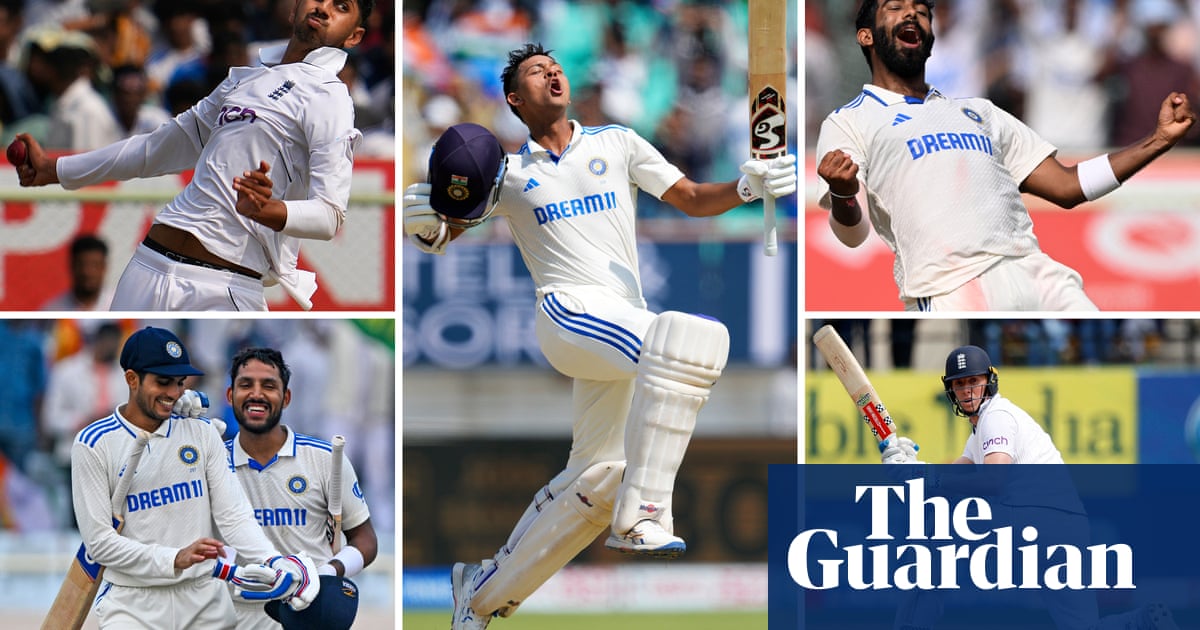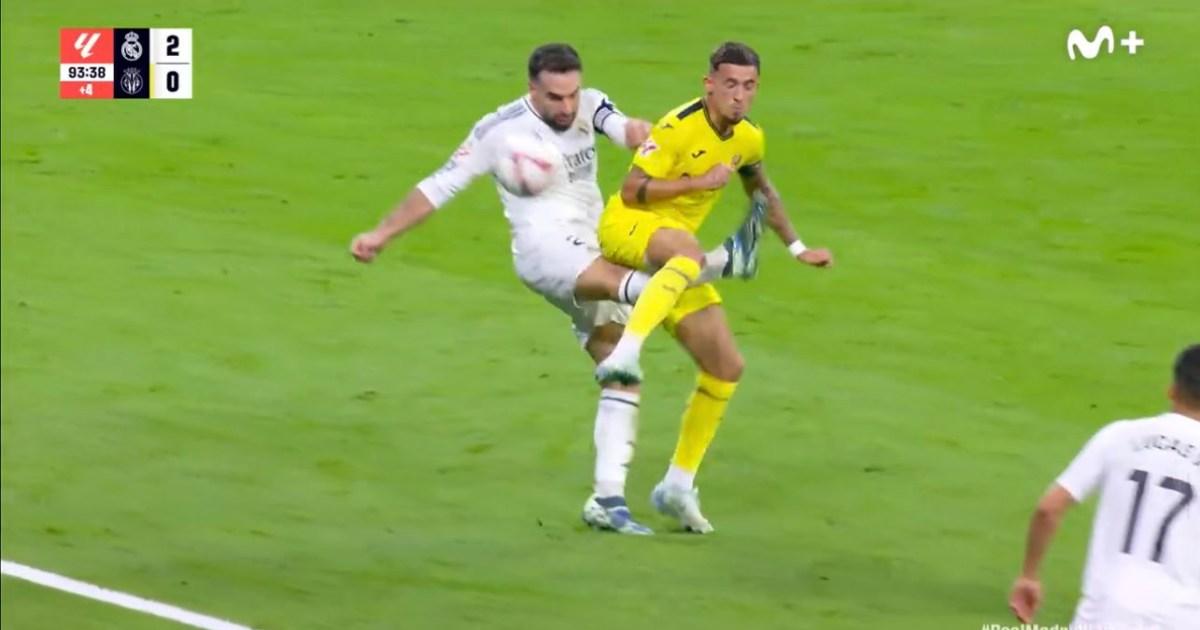England
Ben Stokes: 199 runs at 20; one wicket at 17; four catches
Uncharacteristically, he could not find a way to influence even one match with bat or ball in hand, but it was his captaincy, more than any other factor, that had England trading blows for two Tests and two days in India – and not many teams have done that in recent years. His handling of his young spinners was exemplary (his old spinner not so much) and his roiling imagination in the field stubbornly refused to allow games to drift. Then India’s experience and class began to tell and four collapses in five innings saw an old story play out again. Grade B-
Zak Crawley: 407 runs at 41
He looked what he is probably destined to become, England’s best batter, in making the most runs by an Englishman in the series, though he will be disappointed not to take any of his four half centuries past 80. Unlike some of his teammates, he also showed a greater willingness to adapt his attitude to the match situation, still attacking more often than not, but recognising the value of sitting in the game too. Four times in the four defeats, he did not leave the crease until 100+ had been posted – a testament to the brittleness of what followed. Grade B
Ben Duckett: 343 runs at 34; four catches
England’s “no leaves” pocket rocket made an astonishing 153 at better than a run-a-ball to bring England back into both the match and the series at Rajkot, but five subsequent innings yielded a top score of 27 as India pushed some injudicious comments back where they came from. Will he add a few sensible greens to his raw meat diet of cuts, slashes and sweeps? I doubt it, but that might mean that others might have to adjust their approach, especially in away conditions to avoid a clatter of wickets. Grade C+
Ollie Pope: 315 runs at 32; six catches
Perhaps none more so than England’s vice-captain, who created one monument – his 196 that turned a first-Test, 190-run deficit into a 28-run win – but he could not reach 40 in his nine other knocks. The temptation of hindsight tells us that he used a whole series worth of good fortune in that extraordinary six hours of sweeping in Hyderabad but, as a senior pro in his seventh year as a Test batter, he needs to work out a more reliable means to express his talent – the cat-on-hot-tin-roof approach is an indulgence that few No 3s can afford. Grade C+
Joe Root: 320 runs at 36; eight wickets at 51; 10 catches
Which is what England’s No 4 did, showing the humility to put away his dad-dancing routines and waltz to 122 and 84 in the last two Tests, innings that shielded his team from total humiliation. To be fair, those throwbacks to the sublime subcontinental batter we know and love only came when his captain released him from frontline spinning duties, a burden that may have impacted on two crucial drops of Jaiswal and Rohit at slip earlier in the series, when his hands were too high too soon, possibly the product of waning concentration. Something had to give with such an unmanageable workload, and it did. Grade B-
Jonny Bairstow: 238 runs at 24; three catches
England’s gamechanger failed to change a game, eight starts from 10 innings squandered, in seven of which he fell between 25 and 39 as he sought to hit himself into the zone. These days, England are happier for a player to receive one cap too many rather than one too few, and that approach might get him into the XI for the West Indies at Lord’s in July – but it might not. Grade D
Ben Foakes: 205 runs at 21; 12 catches and four stumpings
He was picked for his wicket-keeping skills, especially to spin, and he delivered exactly what was specified in an old-school display of anticipation, footwork and soft hands. There were times when you could simply spend a half hour in a reverie watching a master technician at work, before being woken by another six dispatched back over the bowler’s head. He’s no counter-attacking No 7 though, especially with so weak a late order with which to work. Grade B
Tom Hartley: 185 runs at 19; 22 wickets at 36; two catches
After an initial mauling from batters determined to make him the next Simon Kerrigan, he held his nerve, the captain showed courage in keeping him on and he gained both wickets and the respect of the best players of spin in world cricket. He delivered the plan (an attacking line from a high arm to get turn and bounce) perfectly and demonstrated the concentration and mental resilience to bowl 250 overs in five matches. He also batted with a bit of devil too. Grade B+
James Anderson: 13 runs at 3; 10 wickets at 34; two catches
The old thoroughbred ran in and found a way to conjure wickets from conditions that were rather different to those in which he learned the game in Burnley. His 110 overs across four Tests showed that his captain used his senior pro wisely, his 20 maidens demonstrating the respect his opponents afforded to the 700-wicket man. Grade B
Shoaib Bashir: 33 runs at 11; 17 wickets at 33; one catch
Bashir shut out the noise around his late arrival and embraced his chance with both hands. He bowled as if he expected a wicket from every ball and delighted in them when they came along. He already has two fivefers to demonstrate his potential and one hopes he will soon get plenty of county cricket overs to iron out the drag-downs and full balls that are, inevitably, a feature at this stage. His overspun, dipping delivery is a threat though, especially to left-handers – he should take every chance to speak to Nathan Lyon when he arrives for his English summer. Grade B+
Rehan Ahmed: 76 runs at 13; 11 wickets at 44; three catches
He has the chutzpah required of a young leg-spinner but the control is still elusive, the four-balls far outweighing the rippers. He has plenty of time to learn, but his captain appeared reluctant to bowl him at times. While certain to play lots of white-ball cricket, his red-ball future is less predictable. Grade C
Mark Wood: 48 runs at 10; four wickets at 78
He knocked over India’s two new princelings at Rajkot to give England hope, but that was the only innings in which he took wickets, his raw pace emasculated in conditions that offered him no lateral movement in the air. Grade C-
Ollie Robinson: 58 runs at 29; no wickets
He batted with skill and intelligence, but he bowled like a man playing his first match in seven months, so it would be tough to judge him too harshly. People will though. Grade C
Jack Leach: 0 runs at n/a; two wickets at 48
It was another injury-curtailed series for England’s hitherto first choice spinner. He will have noted the attacking lines bowled by the three youngsters (and the concomitant economy rates). Grade C
India
Rohit Sharma: 400 runs at 44; six catches
India’s captain took a while to find his batting groove but class will out and two centuries and a fifty hammered the nails into England’s coffin in the last three Tests. His captaincy, particularly in contrast to his predecessor, can look passive in the field, but he rallied his troops magnificently after the shock defeat that opened the series, refusing to dwell on the excuse of experienced absentees. Grade A-
Yashasvi Jaiswal: 712 runs at 89; no wicket; three catches
At the start of the series, people wondered whether he was the next great star of Indian cricket; now the question is whether he is the next great star of world cricket. At 22, he has perfect balance, dazzling footwork and an instinctive feel of when to seize the moment, hitting sixes seemingly effortlessly to put the pressure back on to the bowlers. Add that cocktail to a voracious appetite for runs and you have the complete 21st century batter. He’ll need to export those talents into alien conditions overseas but he looks far more likely to be the heir to Brian Lara than to Vinod Kambli. Grade A+
Shubman Gill: 452 runs at 57; six catches
India’s previous golden boy had a tough start to the series, reaching outside off stump and nicking too many beyond his eyeline. While his ears rang with calls for his dropping, he answered his critics with a crucial second-innings century at Vizag that excavated India from a tricky position. That got him going and he never looked back. Grade A-
Sarfaraz Khan: 200 runs at 50; three catches
The run machine from domestic cricket was finally given his chance (after a touching cap ceremony with his tearful father) and he did not waste it, pugnaciously delivering three half-centuries in three Tests. His bouncing celebrations of close-in catches are a delight to behold. At 26, he takes his place in the next generation of Indian batsmanship. Grade B+
Devdutt Padikkal: 65 runs at 65; two catches
Padikkal was brought in to do a job against a tiring side in the fifth Test and he did it. He will now line up in the logjam of batting talent at Sharma’s disposal. Grade B+
Dhruv Jurel: 190 runs at 63; five catches and two stumpings
Where did he come from? In just two years, he has progressed from a first-class debut to the Test XI, looking as gifted on one side of the crease as the other. In an era when international keepers are often selected for their batting and expected to learn the glovework on the job, he is a breath of fresh air. Rishabh Pant is now close to full fitness, but may end up playing as a specialist batter if Jurel continues at this level. Grade A
KS Bharat: 92 runs at 23; six catches
Bharat did not do much wrong but, after two nondescript matches, the brutal logic of elite sport saw him lose his place to a far greater talent. It might be a long road back for the 30-year-old. Grade C+
KL Rahul: 108 runs at 54
As classy as ever in his one Test before injury ruled him out. Grade B+
Sheryas Iyer: 104 runs at 26; one catch
Another player who paid the penalty after failing to convert four starts into a substantial innings, his debut ton is now 14 Tests in the past. He has time to come again, but whether the post-Kohli, post-Rohit India will skip a generation to those in their early 20s now, remains to be seen. Grade C-
Rajat Patidar: 63 runs at 11; four catches
Having been brought in for KL Rahul after the first Test, he was dropped by the fifth having looked a little overawed by the scale of the challenge. As is the case with his contemporary, KS Bharat, one should never say never, but it might turn out to be so. Grade D
Ravindra Jadeja: 232 runs at 39; 19 wickets at 25; one catch
Like his longstanding spin twin, he has been so good for so long that it’s easy to overlook his excellence. But there it is – a critical century to rescue India from 33 for three at Rajkot in the pivotal third Test and then five for 41 to slam the door on any hopes England may have harboured in rallying spirits with a bit of fight. There weren’t many runs to follow – there didn’t need to be – but he chipped in with wickets. Grade B+
Ravichandran Ashwin: 116 runs at 17; 26 wickets at 25; one catch
The veteran off-spinner looked short of his imperious best in the first half of the series, his mind perhaps distracted by domestic matters that required a day at home in the middle of the Rajkot Test. He returned fired up with the competitive instinct that has burned bright for 100 matches and had much too much guile for England, securing 15 wickets as India sprinted to the 4-1 scoreline. Grade B
Kuldeep Yadav: 97 runs at 20; 19 wickets at 20
Can you really be a surprise package seven years after your debut? Brought in as a replacement for the injured Jadeja in Vizag, he asked the fiercely tricky questions that only a left-arm wrist spinner can ask and kept his place when Axar was axed. Thereafter, he bowled with ebullience and batted with discipline to take vital wickets with sharply turning deliveries, either way, that England’s batters could not read, and an evil snaking slider that was aimed for the edge and often found it. To take his wickets at a better average and strike rate than his illustrious colleagues in the spin unit shows just how good he was. Grade A-
Axar Patel: 133 runs at 33; five wickets at 41; one catch
England had no answer to his scuttling flying saucer ball last time round, but pitches much more conducive to an even battle between bat and ball nullified his threat and he gave way to the bouncing Kuldeep. He made handy runs, but he’s no No 6 in any Test side. Grade C+
Mohammed Siraj: 15 runs at 15; six wickets at 46; two catches
Bustled in with his usual aggression, his four wickets in the first innings at Rajkot snuffing out any chance of an unlikely first-innings revival. He bowled only 67 overs across four Tests, which suggests that his captain had better options most of the time – and he did. Grade C+
Jasprit Bumrah: 58 runs at 12; 19 wickets at 17; four catches
One of which was the peerless spearhead of India’s attack, his 19 wickets at 17 an absurd outlier among the pacers on show. His nine wickets at Vizag dragged India back into the series, rightly securing the player of the match award ahead of double-centurion, Jaiswal. His ability to find bounce and movement on unresponsive pitches from a snapping wrist and supreme control is as impressive as any bowler in India since (at least) Dale Steyn. He is India’s best opening bowler since Kapil Dev and may go on to surpass even his standing in the sport. Grade A
Akash Deep: nine runs at 9; three wickets at 28; one catch
He enjoyed a fairytale opening spell in Test cricket, knocking over England’s top three in Ranchi, but he didn’t bowl in the second innings and gave way to the returning Bumrah for the final Test. Grade B-
Mukesh Kumar: no runs; one wicket at 70
He made his debut in Vizag and looked a bit of a trundler, an opinion perhaps shared by his captain who gave him just 12 (expensive) overs. He wasn’t picked again. Grade D







